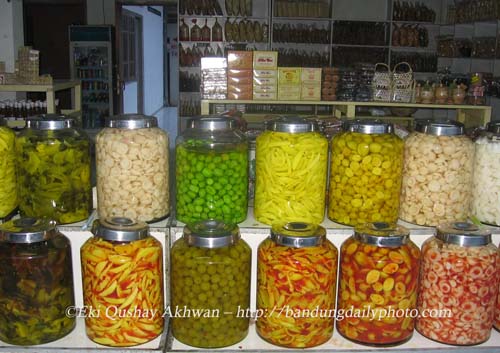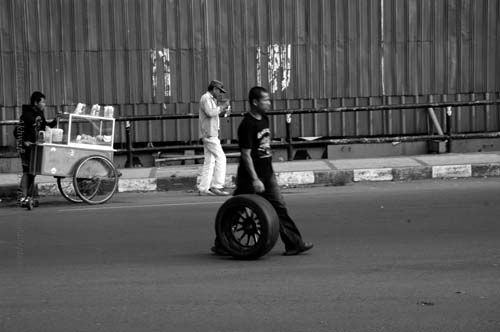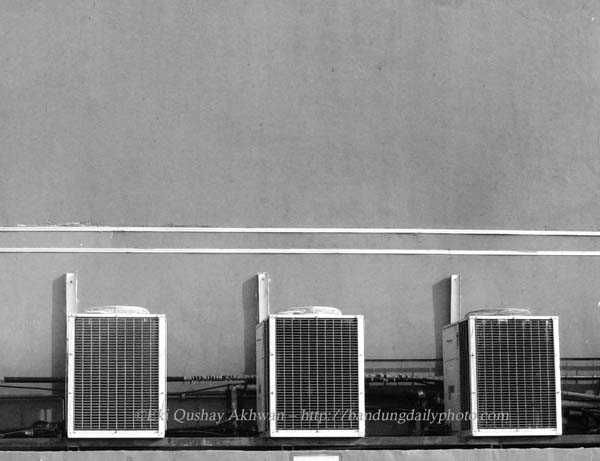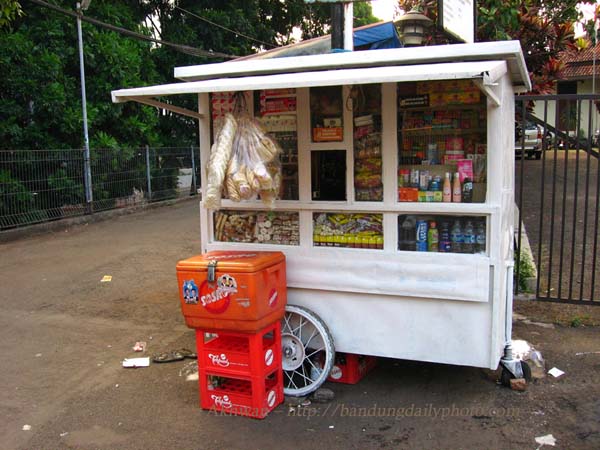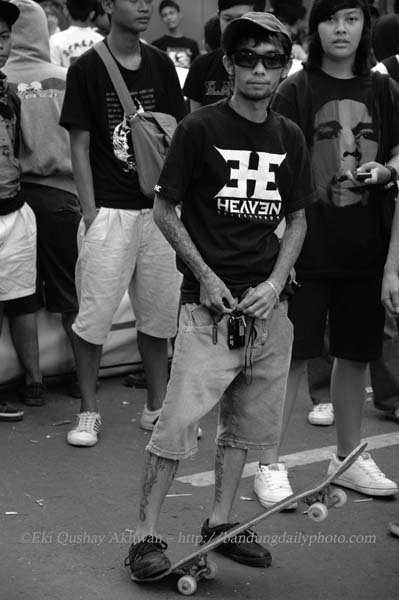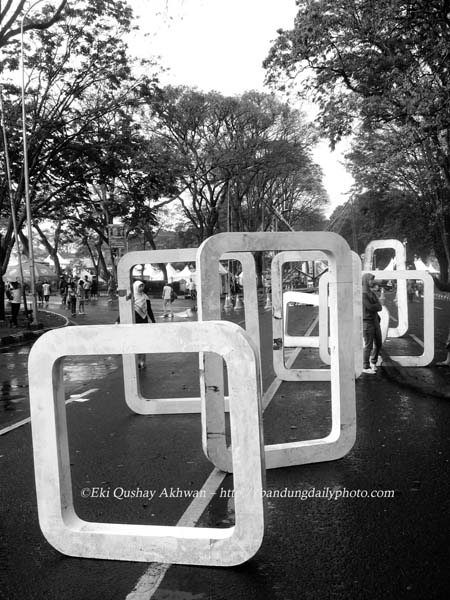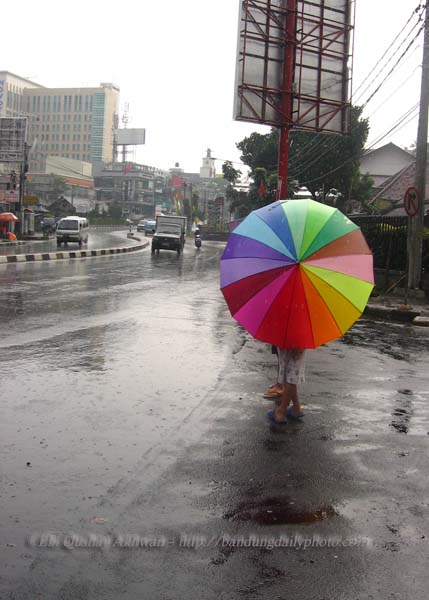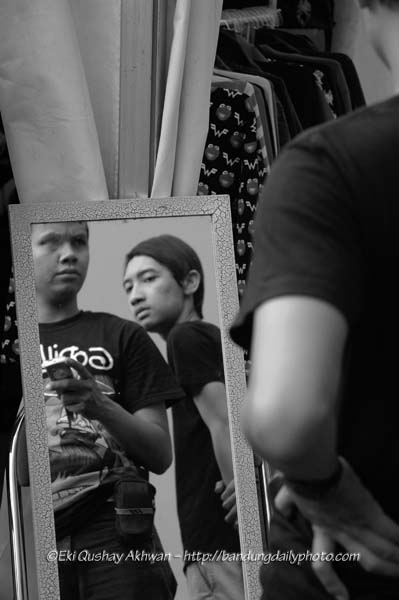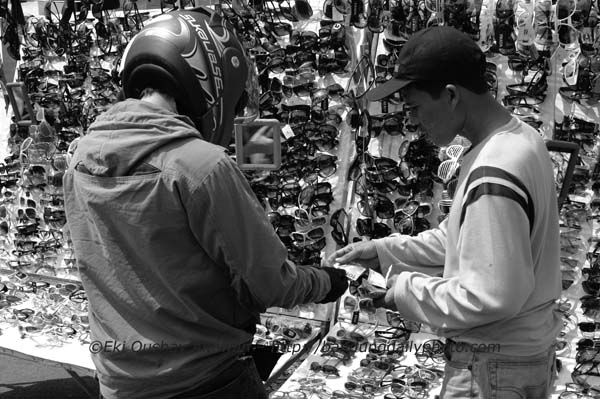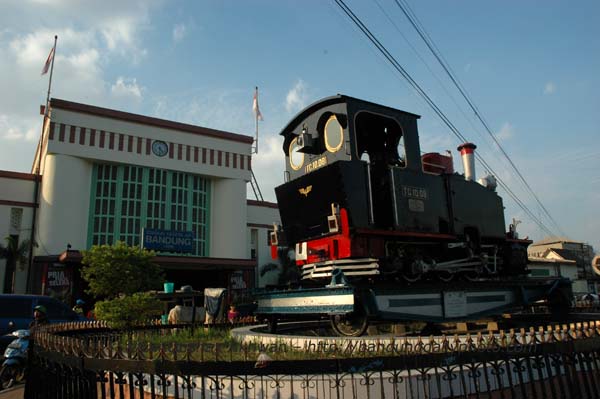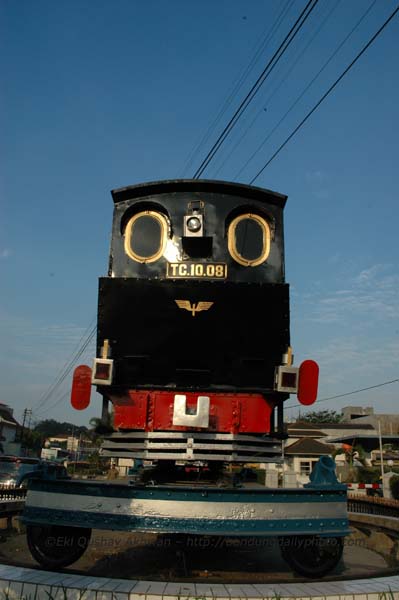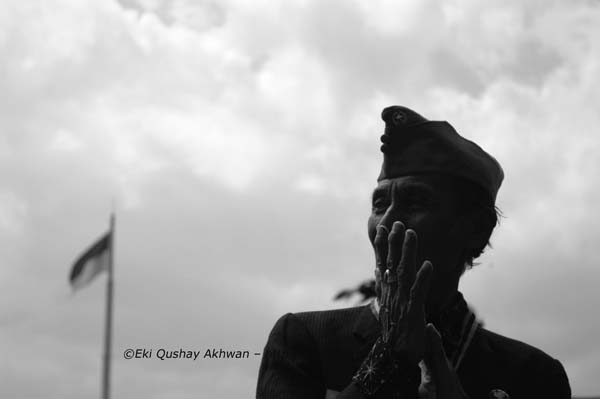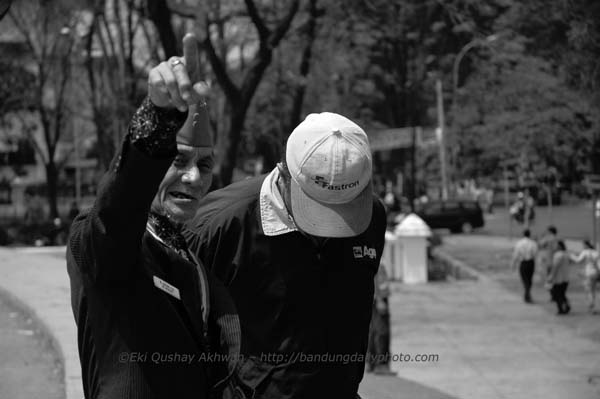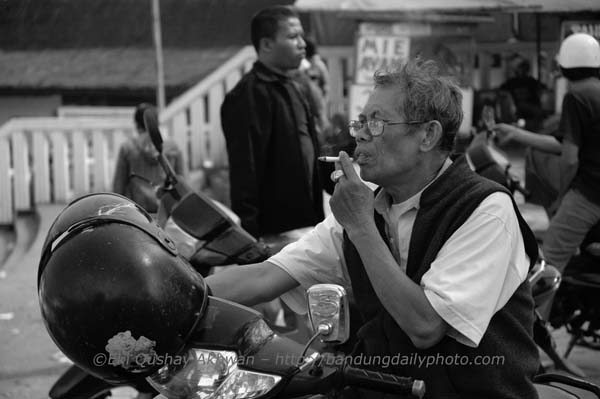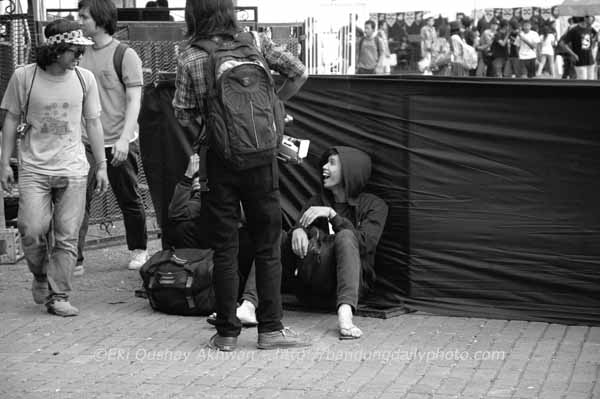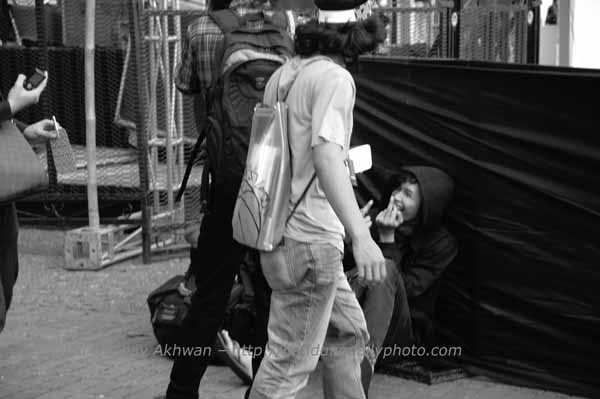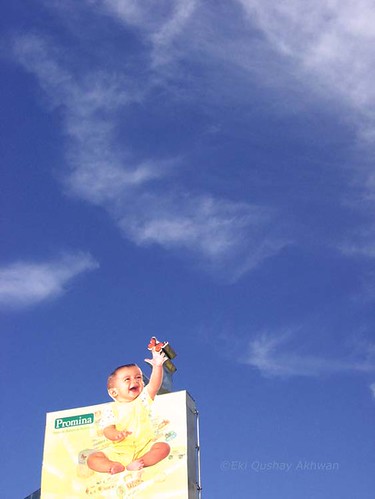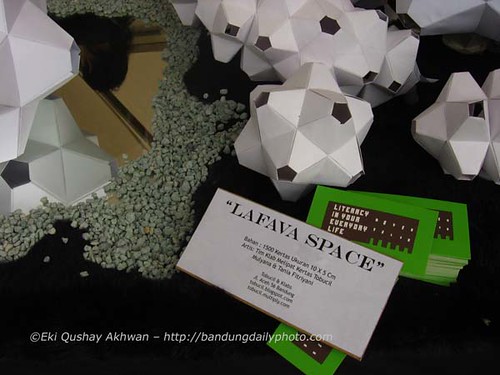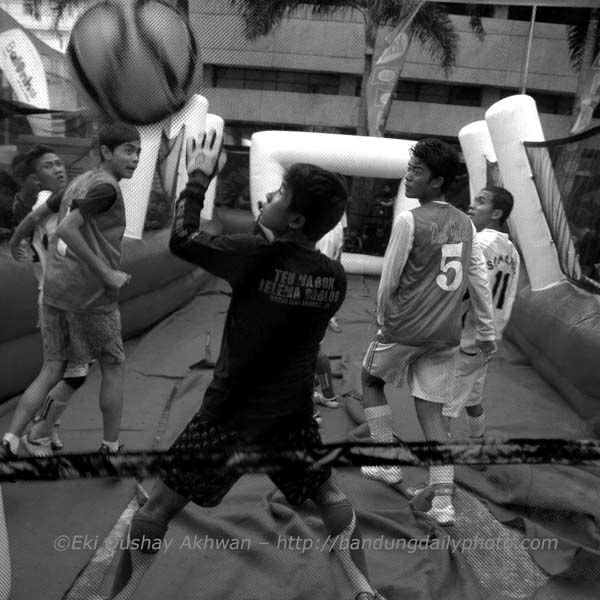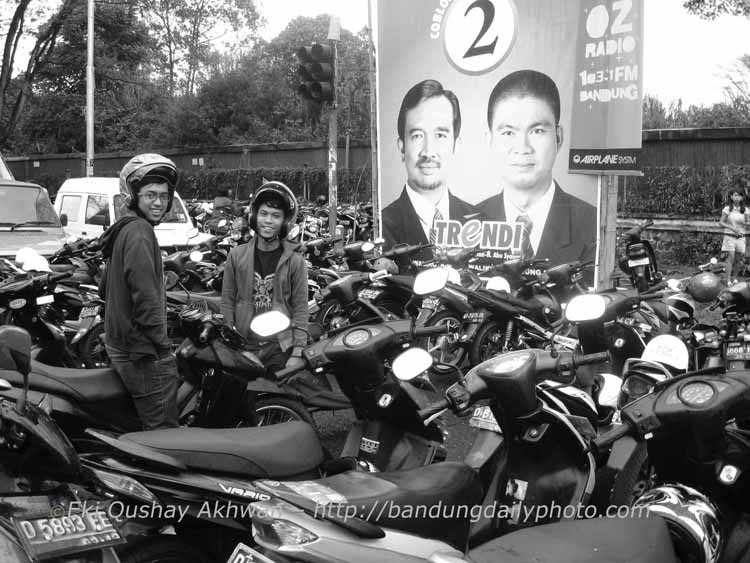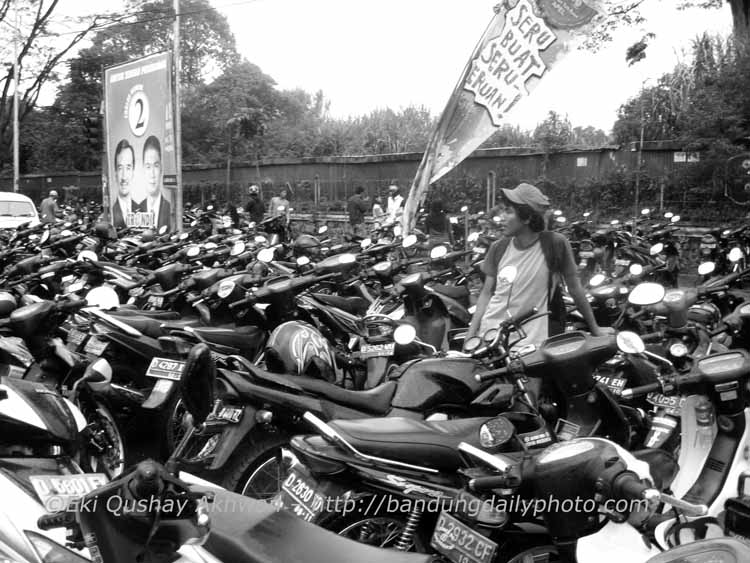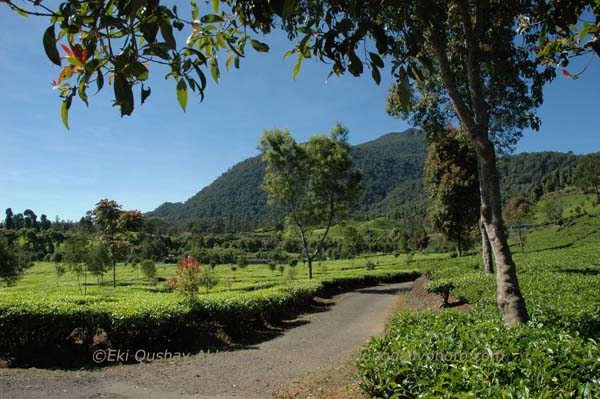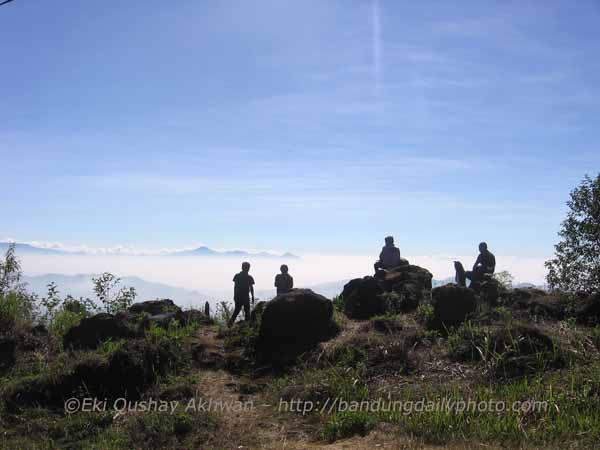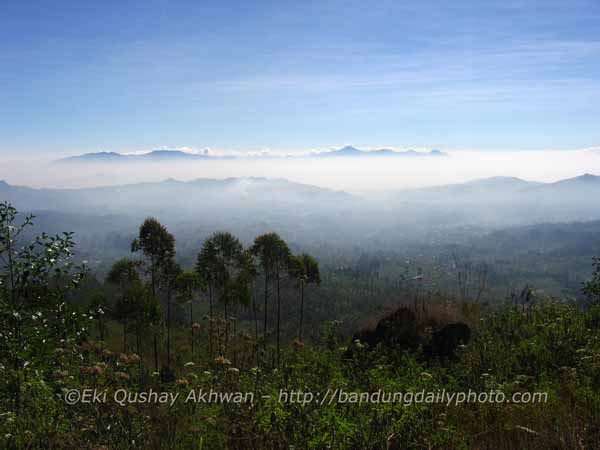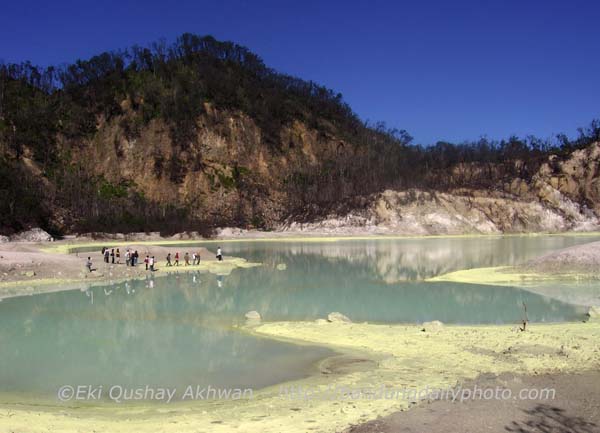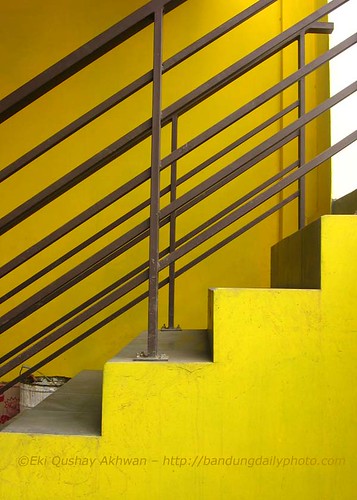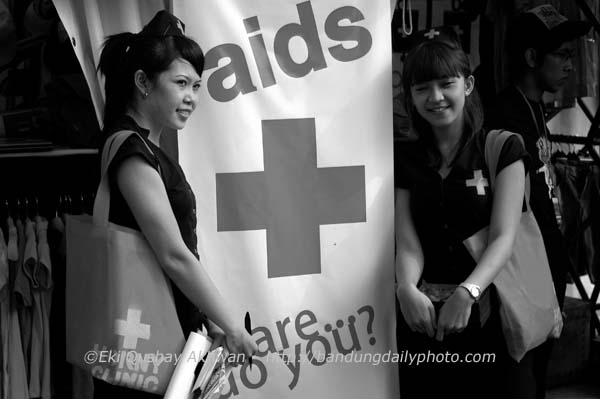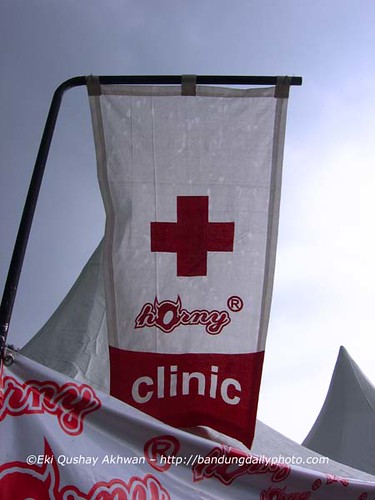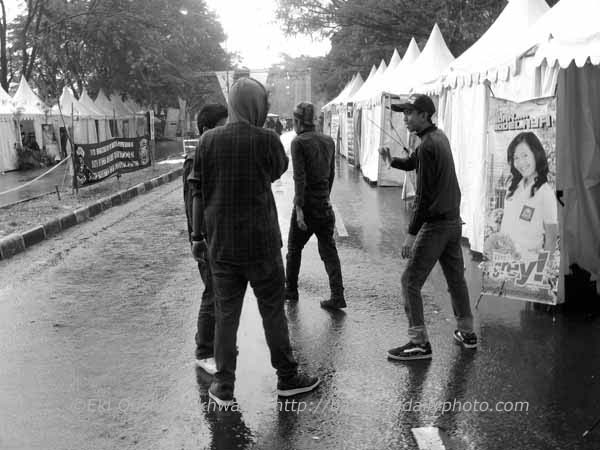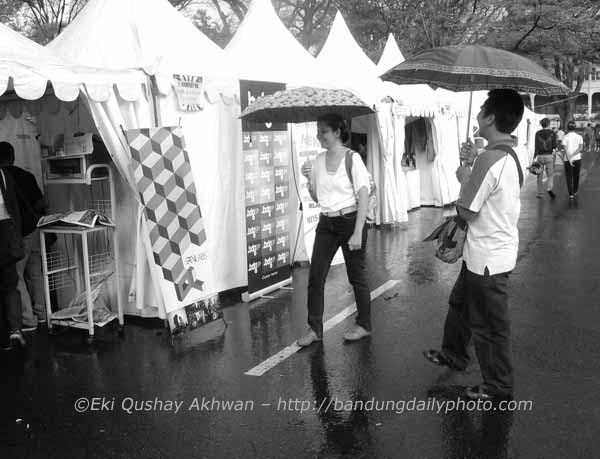 Text and pictures by © Eki Qushay Akhwan
Text and pictures by © Eki Qushay Akhwan
Just a reflection on ourselves. We, photographers or photography enthusiasts, not all probably, but undoubtedly many of us, are infinitely proud of our gadgets as you can see in these photos.
"Hey, what camera do you use?"
"How big is your thing?"
"Look what I got ...!"
"Hmmm ... that photo I took was a bit disappointing ..."
I don't think I'm one of those photography enthusiasts who are too fascinated with gadgets (I could have, but not anymore). I do have a number of cameras and quite a few lenses. But they were from the old days when I was still very much fascinated with gadgets. Now I just take pictures and don't really care very much about what camera I use. Most of the time I take photos with my 3.2 megapixel point and shoot camera, a Canon Powershot A510, which I always have with me because it's light and easy to carry and inconspicuous in public places. Only occasionaly do I bring my DSLR camera, a NIKON D70, which I bought in 2005, usually when I really intend to hunt for photos.
As you have probably seen from my street photographs, Bandung is probably and quite arguably one of a few great places to do street photography. I've been to (and lived in) quite a number of cities in the world. Nowhere did I feel so much at ease about taking photographs in public places than Bandung. This could be a subjective feeling, I know. I've lived here most of my life, even though I was not born here. But then, there could be a number of other factors that make street photography so much more easier to do in Bandung. People here are very friendly and are not usually shy with stangers. The streets, chaotic though they may look at times, are very alive and bustling with a lot of things: vendors, jay walkers, shoppers, ...
We may not be as afluent as people who live in more developed countries, but I sense the people are genuinely much happier here, freer too.
I once had a bad experience taking pictures in the United States (I studied there for two years). One sunny, summer afternoon, I was taking pictures on the street. Minding people's privacy, which I knew was highly valued by Americans, I only took photos of buildings and architecture. Just when I was busy doing it, a police car stopped right in front of me, and the officers began to interrogate me. Apparently, a good citizen, seeing a stranger-looking guy taking pictures of buildings, had called the police. He/she might have thought that I was a terrorist planning a terror attact of some sort with my photography. Only with difficulty, and after a few phone calls to my university's international students' office, did I convince the officers that I was a legal resident and that I was not a bad guy. Still, I think, they keep a record of my identity.
It feels good to be free in a free country.

